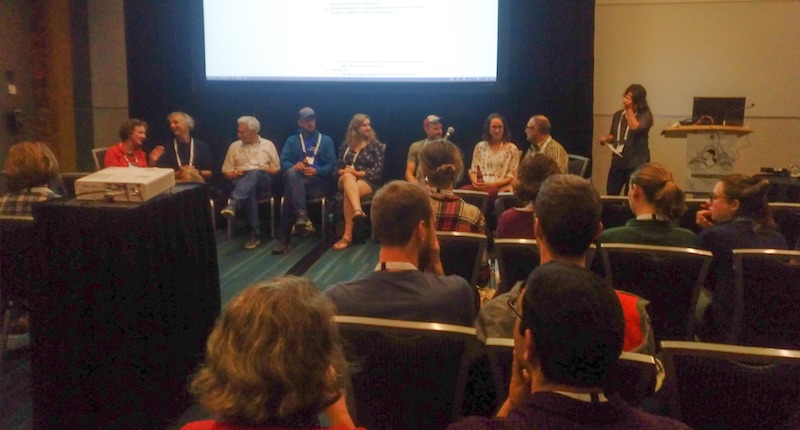
Networking and stepping out of your comfort zone
After having heard about how large and meaningful it could be, I was excited to finally get the chance to attend the International Ornithological Congress (IOC). So following suggestions from more experienced peers, I decided to plan the conference accordingly to get the best out of it. However, the number of interesting talks and activities during IOCongress2018 completely exceeded my expectations. More than 1,500 ornithologists from different countries and backgrounds were ready for a fabulous ornithological week for IOCongress2018 in Vancouver, Canada.
IOCongress2018 was a very rewarding professional experience for me for three main reasons: First, the congress was organised together with the Vancouver International Bird Festival. This combination created an incredible atmosphere were scientists, artists, photographers, birders and general public interested in birds could enjoy daily bird-related events. In my opinion, this kind of events is essential to promote science communication and bridge the gap between research and bird conservation.
In particular, I enjoyed inspiring activities as “Birds as peacemakers”, lecture that presented birds as an important tool for cooperation, and the splendid “Silent Skies” mural project created by members of Artists for Conservation (@NatureArtists) that depicts 678 endangered species of birds of the world.

Second, the diversity of sessions, talks and poster presentations at IOCongress2018 was extremely inspirational and energising to me. It allowed me to connect with a greater scientific community, think about new strategies to approach my research, contemplate the bigger picture, and establish collaborations. During the congress, I was amazed to see the large number of talks about migration and the diversity of methods to study it. The integration of the new satellite tracking methods (@martinwikelski), with ring-recovery data (@wfiedler2), citizen science database (@CatMorrison18) or remote sensing tools (@bvdbirds) place us in an excellent position to face multi-scale questions of when and where birds go during their annual cycles and informing numerous scientific disciplines.

Currently, I am using eBird data (www.ebird.org) to study characteristics of long-distance migrants that increase susceptibility to global change. Presenting my work at the Conservation of African-Eurasian Migratory Landbirds symposium was an excellent opportunity to both get feedback and lay the groundwork for potential collaborations to start replicating my study on the Africa-Eurasian flyway in other flyways – such as the Americas or the East Asian-Australasian. All symposium speakers highlighted the importance of identifying critical non-breeding areas for migratory bird conservation.

© Guillermo Fandos
Finally, as a member of the European Ornithologists’ Union’s (EOU) Early Professional Committee, and together with the committee of the American Ornithological Society (AOS), we organized a fantastic roundtable to discuss the challenges facing early career professionals in ornithology. Thanks to Emily William (@wayfaringwilly) and Robyn Womack (@RobynJWomack), who led and invited the excellent diversity of panel members, the event was very successful. It hosted a wide-ranging of discussions, such as looking for a future in ornithology and academy, the work-balance or how to combine work and everyday challenges as an early career researcher, in or out of academia. Networking and stepping out of your comfort zone were key elements throughout all the session. After the session, we went to complete the social part of the event in a close pub. Nowadays, the career paths that PhD graduates will follow after graduation vary greatly. Hence, these kind of events are more important than ever, where early career researchers have the opportunity to meet, share experiences, discuss funding and employment opportunities both inside and outside of the academy. This autumn, Turin is hosting the 2nd European Meeting of Young Ornithologists, and I believe that these events and providing the space for young professionals to feel comfortable to grow are essential for the future of the ornithological societies.
Blog posts express the views of the individual author(s) and not those of the BOU.
If you want to write about your research in #theBOUblog, then please see here.





